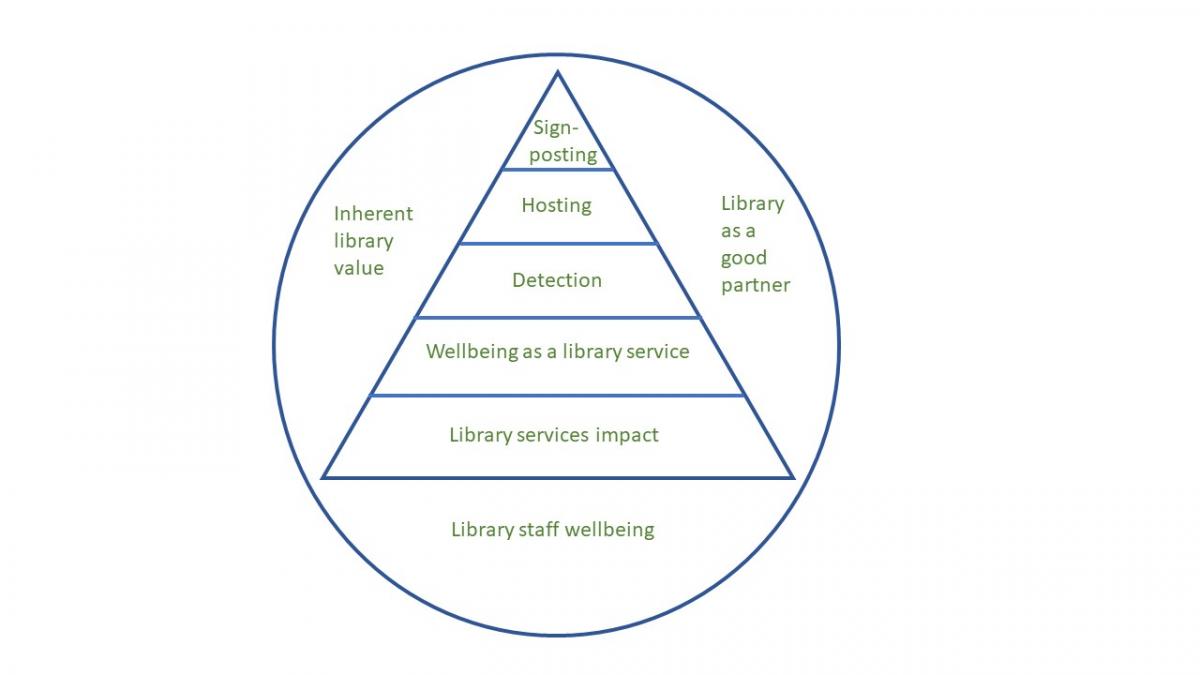What are the ways that libraries contribute to student mental health and wellbeing? Thinking about this is a starting point for a strategic approach to the issue.
A holistic model of library support to mental health and wellbeing

A model of library roles in mental health and wellbeing (from Cox and Brewster, 2020)
This image published in Cox and Brewster (2020) is one attempt to give an overview of the roles libraries can have in supporting mental health and wellbeing.
A central pyramid identifies specific initiatives that promote student mental health and well-being. In the outer circle are supportive elements that support this.
The positioning inside the pyramid reflects the strength of commitment required, with the greatest needed for those items at the bottom of the pyramid, where its broadest:
- Library services impact. This refers to the idea that running traditional services impacts wellbeing. E.g. ensuring no queue at the service desk or printer is one way to impact wellbeing because it helps students who might be rushing to meet a deadline.
- Wellbeing as a library service. This refers to the range of specific initiatives such as wellbeing collections or spaces that can be developed specifically to tackle wellbeing.
- Detection. This refers to the idea that the library might be one place where people suffering from mental health issues are present themselves and are potentially guided to support. Library staff may notice distress, excessive working or a change in a student’s demeanor that encourages them to have a conversation with the student and signpost accordingly.
- Hosting. This refers to the library simply being a location where events are held that support mental health and wellbeing. These can be run by the library, or other services.
- Signposting. This refers to simply pointing people to other services where actual support is being offered. E.g. the university counselling service.
Inherent library value is in the outer circle because it suggests that all aspects of the library contribute to student well-being. Here the idea is that the whole purpose of a library is to promote learning and growth, and so by definition should be seen as contributing to mental health and well-being of users.
Library as a good partner is part of how a library contributes to the wider mental health agenda and might be demonstrated or supported through specific aspects in the pyramid, so is also presented outside the pyramid.
Support to library staff well-being is also a background to other aspects on the basis that staff with good well-being are better able to support students’ wellbeing. But equally we could comment that staff well-being could be impacted by the attempt to support student well-being because it is an extra task with strong emotional demands.
Refer to the article for more detail and examples.
There could be other ways to think about the range of things libraries do, but this framework provides one starting point.

Stay Connected with Academic Libraries North
Join our community and stay updated with the latest news and resources
Quick links
Member links
